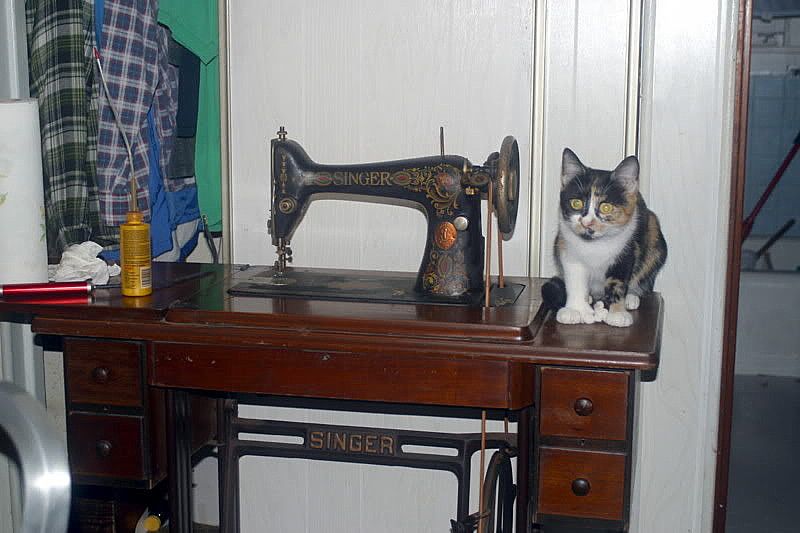I was finishing up the assembly of the smaller of the two 'All Machines' quilts. I had made so many squares I made a lap quilt to go with the bed quilt. The lap quilt is 48"x60", made from 6 1/2" denim squares with a fleece back.

I had sewn the squares together with my HOTHER and had intended to finish it with the same machine but then we began talking trade with another forum member here in IL. We had agreed to trade her a 66 for the machines she had and I wanted to make sure it was running good.

So I took Mr Lucky off the shelf and checked him over. Looked pretty good for an old phart. Mr Lucky was made in 1927 and was sold to me as a parts machine

but I borrowed the missing parts from a couple of my other 66s and gave him a try. He sewed so nice I refurbished him. But I never really did anything major with him. So to make sure he was fit to be rehomed I decided to quilt my lap quilt with him.
But I ran into problems. All the testing I'd done with this machine was light weight materials, two flat layers of denim or pre-quilted materials.
Because of the decorative stitches in each square we decided to use the SITD method and with a seam every 6" it was a nightmare. He'd stall out at every hump. I had to actually pull the quilt through the foot and feed dogs because he would not feed it. That made no sense to me or my wife and we were pulling out our hair trying to figure this out. I tried different feet and presser foot shaft tensions and nothing worked. The machine was sewing just fine even when it wouldn't feed so that made it even more confusing. I had not run into this before, to this extent anyway, and Elaine hadn't run into this in her life as a sewist.
Then after finishing the first direction of stitches I decided to switch machines. I had to try something. As we were thinking on which machine to try I had a thought. Perhaps the feed dogs were slipping on the fleece backing rather than feeding it. How to verify this? Well, sew a seam with a different machine. Then I said; that doesn't make sense .... the feed dogs are up why won't they feed?
At this point I looked at the feed dogs on Mr Lucky and at the highest they would go, the teeth were not completely above the needle plate.
I opened up my Singer 66 Treadle #1 Mr Lucky was sitting on and compared them.

Yep, the feed dogs were higher by a bunch.
I tried to sew a row on the quilt and 66 T1 even with the small straight stitch foot it fed the quilt through without a hitch.
So while Elaine held the flash light I used a dime as a reference and raised the feed dogs on Mr. Lucky to match 66 T1 and tried that. Success. Mr Lucky now fed the quilt sandwich without any trouble at all. I put the regular SS foot back on and adjusted the presser foot tension back to normal and ran a few SITD rows. Much much better.
Then after all the trouble was fixed Elaine sat down and finished the rows and stitched down the edges.


All we need to do now is put the binding on it.
So I guess the moral to this story goes something like this. If your machine won't feed like it should and everything mechanical has been checked and eliminated, check the feed dog height, they just might be set too low.
Joe